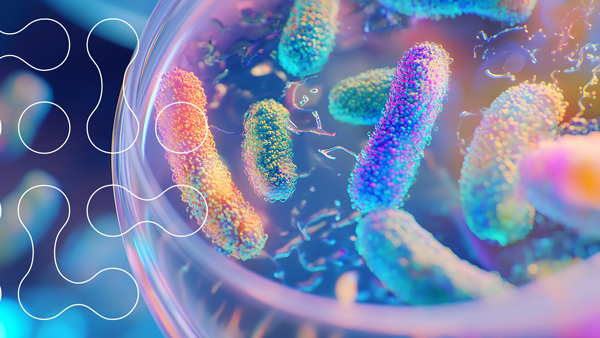Biodiversity refers to the variety of life in a particular area—everything from animals and plants to microorganisms. These species interact with one another, supporting survival by providing food, water, and shelter. However, in this delicate balance, if one species—or several—were to disappear, it could trigger ripple effects throughout the ecosystem.
Extinction is typically a slow, natural process driven by environmental changes, allowing surviving species time to evolve and adapt. Even a mass extinction, though brief in geological terms, can last from a thousand to a million years, during which a significant portion of biodiversity is lost. Earth has experienced five mass extinctions, the most recent occurring 65.5 million years ago. Experts now warn that we are in the midst of a sixth mass extinction, but unlike previous ones, this is being driven by human activity and is happening at a much faster rate.
The Sixth Mass Extinction
When people think of mass extinction, dinosaurs often come to mind, as their demise was caused by catastrophic events like meteor strikes. While this association is valid, there have been five mass extinctions since life began to flourish around 540 million years ago. The largest, known as the “Great Dying” or the Permian extinction, wiped out 90% of Earth's species, likely due to volcanic eruptions and significant changes in the oceans.
Fast forward to 2024, and we are facing the sixth mass extinction. Unlike its predecessors, which were triggered by natural events, this extinction is being driven by human activity—primarily unsustainable land, water, and energy use, as well as the failure to adequately address climate change.
This sixth extinction is occurring at a rate 1,000 to 10,000 times faster than the natural extinction rate. This accelerated pace leaves species with little time to evolve, disrupting the predictable patterns that allow ecosystems to function in harmony. Without significant intervention, at least 1.2 million species could face extinction by 2100.
Research shows that since the 1970s, 69% of mammals, birds, reptiles, fish, and amphibians have been lost. Freshwater vertebrates have suffered even more, with an 83% decline during this period. These alarming statistics highlight the rapid and devastating impact of human-driven extinction compared to previous events.
The Problem with Mass Extinction: The Domino Effect
Species coexist in a delicate balance, much like the 'circle of life.' Each species plays a role in helping others thrive.
For instance, the dung beetle, whose diet consists of herbivorous mammal droppings, is crucial for ecosystem health. While this may not sound appetising to humans, without dung beetles, many habitats and agricultural lands would become overrun with faeces.
But dung beetles do more than remove waste—they help control fly populations and improve soil conditions by providing essential nutrients. If the dung beetle were to become extinct, the consequences would be far-reaching. Soil quality would decline, and the increase in flies could lead to problems like flystrike in animals, raising welfare concerns. In fact, without dung beetles, the global cattle industry could face an additional £40 million in costs annually. This domino effect is triggered by just one insect's disappearance—imagine the broader harm that mass extinctions across multiple species could cause.
Causes of the Biodiversity Decline
Unsustainable Farming
Farming is the cornerstone of civilisation, providing not only food but also the raw materials for countless products. While agriculture can be sustainable, current practices have made the industry responsible for 90% of global deforestation and 70% of freshwater usage. To meet the demands of modern lifestyles, habitats are being destroyed for industrial activities. This destruction has led to a drastic decline in biodiversity, as species are no longer able to survive in their disrupted environments.
Climate Change
The climate crisis, fuelled by rising CO2 emissions, is putting immense pressure on ecosystems, disrupting biomes such as rainforests and making habitats inhospitable for many forms of life. Extreme weather patterns, increased droughts, and floods are just some of the challenges species face in their fight for survival.
Climate change has also altered the timing of natural events such as insect hatching and egg-laying, further disrupting the interconnectedness of species. A 1.5°C rise in temperature could put 4% of mammals at risk of losing their habitats, while a temperature increase above 3°C could see 41% of mammals losing their homes. This underscores the fragile balance nature requires and the profound disruption caused by climate change.
Overconsumption and Waste
In 2020, humanity used up the planet's resources at 175% of its capacity—essentially living as if we had 1.75 Earths. Our ecological footprint is largely driven by carbon emissions, which not only exacerbate climate change but also contribute to land, soil, and water degradation. Alongside overconsumption, we are producing massive amounts of waste, particularly plastic. By 2015, two-thirds of all plastic ever produced had become waste.
Plastic pollution affects 88% of marine species, and 90% of seabirds have ingested plastic. Microplastics are an increasing threat, and according to the WWF, by 2100, an area of ocean two and a half times the size of Greenland could contain dangerous concentrations of microplastics. Plastic is also contributing to the destruction of coral reefs, and unchecked plastic pollution is undoubtedly a factor in the ongoing mass extinction.
Helping Stop the 6th Mass Extinction? Advice for Different Stakeholders
As the sixth mass extinction is driven by human activity, everyone—from governments to corporations, SMEs, and individuals—must take action to prevent further biodiversity loss.
Government Action Governments should support sustainable farming by providing incentives for biodiversity-friendly practices and addressing agriculture's role in habitat destruction. They must also invest in renewable energy infrastructure to reduce carbon emissions. Becoming more self-reliant and reducing reliance on outsourcing resources can also lessen the climate pressures driving species loss.
Manufacturers and Industries Manufacturers must ensure sustainable supply chains, prioritising ethically sourced materials that avoid deforestation. Scope 3 emissions reporting is essential to track and reduce the indirect environmental impacts of the entire production process, protecting biodiversity beyond direct operations.
Companies of All Sizes Businesses should set science-based targets to align their operations with global climate goals. They must also audit their partnerships to ensure the companies they work with follow sustainable practices, minimise waste, and maintain responsible supply chains.
The Public Individuals can help by choosing sustainable products that reduce demand for environmentally harmful goods. Reducing reliance on single-use plastics and opting for reusable items will minimise waste and protect marine ecosystems. Additionally, voting with your wallet by supporting businesses that prioritise the planet’s well-being can drive positive change.
Summary
Although 2100 may seem distant, it’s only 75 years away. To put this in perspective, since 1970—just 53 years ago—we have already lost 69% of global biodiversity, demonstrating how quickly ecosystems can be devastated if we fail to act. There is an urgent need for action to prevent further wildlife loss, and this requires a collective effort across all levels of society. Governments, industries, companies, and individuals must act now to protect the planet's biodiversity before it’s too late.




